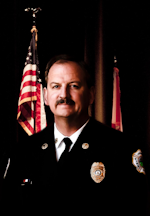While at a movie theme park, I was struck by the set of a plane crash in a residential neighborhood. I thought, “Wouldn’t that be great to run MCI drills in.” I even suggested to one of the EMS road shows to pick a Los Angeles venue for a conference and to pursue the use of the set for a training revolution. Members of our workforce are becoming more and more kinesthetic learners who need to engage physically. It takes a lot to keep their attention and to answer the questions, “Why are we doing this, and why should I learn this?” Simulation quickly can bring to light the reality of poor or competent performance of a crew.
Simulation 101
Simulation should be reality-based. Avoid one-offs or remote possibilities; scenarios that aren’t based in reality will erode engagement or distract from a crew taking the simulation seriously. Also, don’t interrupt the scenario until it’s completed, so it doesn’t become a skills station or practice but is evaluated in its totality.
Simulation is a lot of work. It takes a lot of time to set up scenarios, to get moulage and to prepare a site. Taking the opportunity to use a different location other than a training center or classroom makes the training more valuable. Consider underutilized airport or transportation facilities, commercial or industrial sites and businesses in their off-hours.
While I was an EMS captain at a suburban department, we started a quarterly mini drill program for structure crews. The Insurance Services Office (ISO) required members to conduct a three-hour multicompany drill twice a year—one with the mutual-aid partners, one a night drill. A mini casualty simulation for crews to get them used to 5–10 casualties per incident added simulation variety to the training.
There’s value in simulation regarding risk management. Simulation can identify the things that you didn’t know that you don’t know. In one simulation that we conducted at a fire department, the city was opening a new jail facility. We enlisted the a university fraternity to play inmates during the law-enforcement training to secure a tier in the jail. Each day got progressively worse, from a hanging in the top tier, to an officer who was shanked. Most impressive: Two role players actually escaped what was supposed to be a secured building.
Vomit adds realism
Destroying an airway head isn’t always an option, and don’t try this with expensive simulation equipment or anything that incorporates electronics. That said, it often costs more to ship and to fix older manikins than it costs to buy a new one. (Manikin heads that were being cycled out of use could be bleached for another round.)
A difficult airway with vomiting can be a truly challenging EMS call. For a simulation, I mixed the following in a bucket and let it warm in the sun for a day:
- cream of mushroom/celery soup;
- water (to thin as desired);
- a small can of corn or mushrooms (they clog a suction unit);
- several cans of the cheapest beer (any alcohol can be substituted); and
- dark-red food coloring and coffee grounds (an option for a gastrointestinal [GI] bleed).
(Using an old MAST foot pump to add some velocity to the vomit adds realism when a person first starts to engage the airway.)
When a paramedic or crew experiences this for the first time via simulation, it isn’t potentially at the patient’s expense.
Rather close encounters
Many tricks of the trade help a provider through a “bull frogging” event and to encounter physical and psychological reactions. But these simulations can be big productions and can require time and effort.
Military and Tactical Combat Casualty Care (TCCC) “high-fidelity” simulations often include sensory deprivation via loud music, cadavers and live rounds with hostile role players. Tactical Emergency Casualty Care (civilian version of TCCC) utilizes vision-impairment and requires a provider to perform a survey to find bleeding (simulated by a water bottle) and to apply a tourniquet. In a less intense environment—yet still playing on sensory deprivation—the Geriatric EMS (GEMS) course simulates hearing and visual impairments that a patient might have.
As simulation and manikins get more sophisticated, real simulation must be in the toolbox for emergency services.

Bruce Evans | Fire Chief
Bruce Evans, CFOD, SEMSO, NRP, MPA, is the fire chief for the Upper Pine River Fire Protection District, which is located outside of Durango, CO. He retired as an assistant chief from the North Las Vegas Fire Department after serving 27 years in Southern Nevada’s Fire and EMS system. Evans has been a course developer for many of the National Fire Academy curriculums and serves as a technical writer. He is the recipient of the prestigious 2010 James O. Page EMS Achievement Award and was awarded the NAEMT Presidential Leadership Award in 2014. The Colorado Governor appointed Evans to the State Emergency Medical and Trauma Advisory Committee in 2014. He is NAEMT’s liaison to the National Academies of Medicine preparedness committee and coauthored texts on EMS management and crew resource management and wrote a text on EMS quality improvement.






